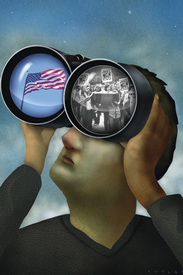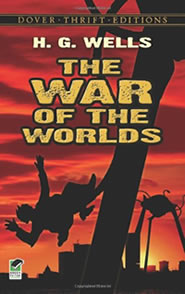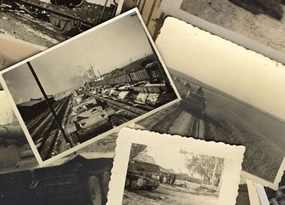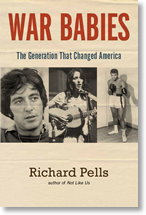
David Cutler For The Chronicle Review
This article previously posted on The Chronicle Review
From the 1940s through the 1960s, the most innovative movement in the American and international academic world was American studies. Now the last surviving giant of that movement is gone. Daniel Aaron, author of Writers on the Left: Episodes in American Literary Communism and founder of the Library of America series dedicated to preserving and publicizing the work of America’s major writers, died on April 30, at the age of 103.
Aaron was part of an academic and intellectual generation in the United States — including Perry Miller, F.O. Matthiessen, Alfred Kazin, Henry Nash Smith, Richard Hofstadter, Daniel Boorstin, Louis Hartz, John William Ward, Leo Marx, and Christopher Lasch — that revolutionized our perspectives on American culture. Their books reinterpreted the American past not only for professors and students but also for general readers.
Most American-Studies Programs Today Have Curricula Indistinguishable From the Courses and Syllabi in History or English Departments
The titles of their books alone give a sense of their ambition to approach the American experience from an interdisciplinary perspective, combining history, literature, political science, social psychology, art, and music. These were the books that anyone in the postwar years had to read if they wished to understand what was distinctive about America: Miller’s two-volume The New England Mind, Matthiessen’s American Renaissance: Art and Expression in the Age of Emerson and Whitman, Kazin’s On Native Grounds: An Interpretation of Modern American Prose Literature, Smith’s Virgin Land: The American West as Symbol and Myth, Hofstadter’s The Age of Reform and Anti-Intellectualism in American Life, Hartz’s The Liberal Tradition in America, Boorstin’s three-volume The Americans and The Image: A Guide to Pseudo-Events in America, Ward’s Andrew Jackson: Symbol for an Age, Marx’s The Machine in the Garden: Technology and the Pastoral Ideal in America, and Lasch’s The New Radicalism in America, 1889-1963: The Intellectual as a Social Type.
Most of the inventors of the American-studies movement were born during the second decade of the 20th century. Many were Jewish (Aaron, Kazin, Hofstadter, Hartz, Boorstin, Marx) and were the children or grandchildren of immigrants from Eastern Europe. All of them reached early adulthood during the Great Depression and World War II. Some were temporarily attracted to the Depression-era Marxism of the American Socialist or Communist Parties. By the end of World War II, they remained on the left, though mostly as liberal Democrats.
Their careers and their work, therefore, were indelibly shaped by America’s struggle with the totalitarian mystique. For them the dominant political figures of their age were Adolf Hitler, Joseph Stalin, and Franklin Roosevelt. As a consequence, many served during the war, either in combat or as participants in the Office of Strategic Services (precursor of the CIA) or the Office of War Information (precursor of the Fulbright program and the United States Information Agency). In these capacities, both during World War II and the Cold War, their mission was to explain America to the world, a task they undertook in their books and as visiting professors in European, Latin American, and Asian universities.
At the first Salzburg Seminar in American Studies, in 1947, designed to familiarize European students with America’s history, two of the featured speakers were Matthiessen and Kazin. So even as the originators of American studies believed in the uniqueness of America, they were also internationalists; their vision and their audiences were both nationalist and global.
These founders of the American-studies movement dominated academic life in the United States until the late 1960s. Then, as with the country itself, their sense of common purpose disintegrated. As did their audience. In the context of the Vietnam War, racial upheavals, and new waves of immigrants arriving from Latin America and Asia, the phrases the American-studies practitioners loved to invoke — the American mind, the American character, the American experience — had ceased to resonate. There no longer seemed to be a shared, agreed-upon definition of what was “American,” either in the past or the present.
In 1971, Daniel Aaron left Smith College, where he had taught for 30 years, to assume the directorship of the American-studies program at Harvard. Aaron later told me that when he arrived at Harvard, he was informed by Bernard Bailyn (the great Colonial historian and once a student of Perry Miller’s) that whatever its former glories, the American-studies movement was dead, and that Aaron’s job was to give the entire enterprise an honorable burial.
Aaron was bemused. But Bailyn’s epitaph for American studies, or at least for the American-studies movement in its original and classic phase, was uncomfortably acute. By the 1970s and 1980s, the assumptions (often unacknowledged) of the creators of American studies were under attack. A new generation of academics in history and English departments — many of whom had been undergraduate and graduate students during the turmoil of the 1960s — regarded their American-studies elders as too conservative, methodologically and ideologically.
Their criticisms of American studies were often accurate. The creators of the movement were primarily interested in the marquee artists and intellectuals of the 19th and early 20th centuries; they wanted to demonstrate, especially to their audiences overseas, that America had a culture worth admiring. So their heroes were Emerson, Melville, Whitman, Twain, Henry Adams, Faulkner, and Hemingway. Missing from this exalted roster were women, African-Americans, Latinos, and Asians. Missing also was much awareness of the impact of modern mass culture in the 20th century — especially the effects on “ordinary” Americans of radio, television, and the movies.
Equally unnerving for younger scholars was the post-World War II notion that American history and culture were unique, or even worse, “exceptional.” The rejection of American exceptionalism coincided with the shift in the academic world from postwar liberalism to a post-1960s affection for radical, quasi-Marxist ideas. Above all, the younger generation of scholars dismissed the original American-studies conception of culture as incurably “elitist” — a term of opprobrium among professors on the political left.
It is, of course, hardly news that a younger generation might revolt against the assumptions of its elders. But this particular revolt effectively destroyed American studies as an intellectual and cultural force in the nation’s life.
Most American-studies programs today have curricula indistinguishable from the courses and syllabi in history or English departments. One finds a preoccupation with literary theory and cultural studies rather than with writers, with social history rather than with art or music. It is hard to imagine a professor or a graduate student in American studies today undertaking a book or a dissertation about, say, John Updike or Philip Roth, or about George Gershwin or Cole Porter, or about Edward Hopper or Jackson Pollock. Nor would it be customary — in fact obligatory — for professors in American studies to have had much experience abroad, or much desire to write a book comparing America’s political rhetoric with that of Britain or France or Germany, as Louis Hartz did in The Liberal Tradition in America.
We do not have in American studies today writers like Kazin or Aaron, Hofstadter or Boorstin, Matthiessen or Lasch, who tried to influence an audience that existed beyond the narcissistic confines of the academic world.
What, one wonders, is the special mission of American studies in our time? Where are the American-studies scholars eager to write for general readers, hoping to influence the culture and politics of the United States? Why are we content to speak only to our peers, those 20 other specialists on our turf, in exchange for tenure and professorial status, if not relevance in the outside world?
It was this narrowness, more than any other academic trait, that the founders of the American-studies movement tried to transcend. They dominated academic life for 30 years, and they have been neither superseded nor replaced.
Daniel Aaron’s death is a reminder of what we have all lost in the nation’s culture. So perhaps it wouldn’t be such a bad idea if at least some of us reread Writers on the Left, as well as On Native Grounds, The Age of Reform, or The Machine in the Garden — not just as mementos of a golden age, but as models to which academics could still aspire.
Richard Pells is a professor emeritus of history at the University of Texas at Austin. His most recent books are War Babies: The Generation That Changed America (Cultural History Press, 2014) and Modernist America: Art, Music, Movies, and the Globalization of American Culture (Yale University Press, 2011).


